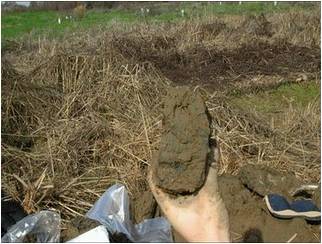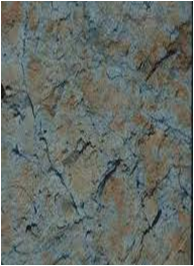Practitioner's Tool / Seasonally High Groundwater
Use the test holes excavated in Step 2 to identify signs of seasonally high groundwater. The signs may include soil mottling (color patterns in the soil as shown in the photo) or standing water in the test hole. The depth of groundwater is very important when considering sites for on-site effluent leaching. If groundwater is too high, it may result in a direct conduit between the leaching trenches and drinking water supplies. Additionally, high groundwater conditions require special construction techniques when installing tanks and pipelines.
Groundwater for Site Evaluation
The depth of groundwater is very important when considering sites for on-site effluent leaching. If groundwater is too high, it may result in a direct conduit between the leaching trenches and drinking water supplies. Additionally, high groundwater conditions require special construction techniques when installing tanks and pipelines.
The depth to groundwater can be established by monitoring wells in the area by probing and measuring to the static water depth. Drinking water wells, however, are often excavated more deeply to obtain water of higher quality. For these wells, water-bearing soils (aquifers) in the upper reaches of the soils (perched aquifers) are sealed off to protect the quality of deeper supplies; therefore, evaluation of drinking water wells may not give the entire picture of groundwater at the site you are evaluating.
Evaluating the soils can also give clues as to the depth of groundwater. The primary clue is the presence of mottles, or areas of soils discoloration, as shown in the image to the right. This condition is primarily caused by the deposits of metal ions left on the soil while in saturated conditions. Technically, these mottles are known as redoximorphic (redox) features—features caused by the reduction and oxidation of chemical compounds while saturated. While the chemistry may be complex, the signs are easy to see. Look for the highest elevation of redox features in the soil profile to determine the limit of seasonally high groundwater.
To determine the depth of seasonally high groundwater, measure from the ground surface down to the uppermost signs of soil mottling or groundwater wetting.
NOTE: The concept of soils-based wastewater treatment and disposal is based on discharge of effluent into unsaturated soil. It is important to keep the bottom of your disposal trench, bed or pit at least one meter above the highest level of seasonal soil saturation. This helps to ensure that the soils do their job—making wastewater effluent safe for discharge into the environment.


